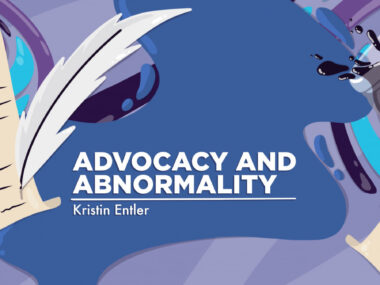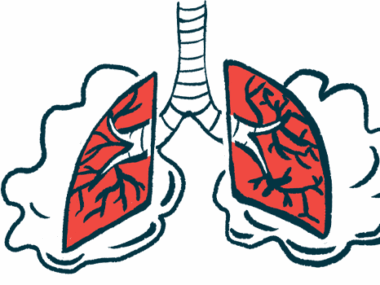Fewer CF Patients Met Care Targets During 2020 COVID-19 Pandemic
Telehealth services partially compensated for big drop in in-person clinical visits
Written by |

Despite widespread use of telehealth, fewer cystic fibrosis (CF) patients in the U.S. met the recommendations for routine follow-up during the COVID-19 pandemic in 2020 than in 2019.
However, the use of telehealth was related to higher adherence to aspects of CF care that can be evaluated remotely.
“In all analyses, having received the recommended level of care in 2019 was associated with a higher odds of both reported telehealth use and achieving the recommended elements of the CF care model in 2020,” researchers wrote.
The study, “Factors associated with receiving CF care and use of telehealth in 2020 among persons with Cystic Fibrosis in the United States,” was published in the Journal of Cystic Fibrosis.
COVID-19 pandemic led to substantial decrease in in-person clinical visits
Current guidelines from the U.S. Cystic Fibrosis Foundation recommend that patients 6 years or older visit a care center quarterly to monitor their nutritional status, pulmonary function, potential infections, and CF complications such as diabetes and bone disease.
In 2020, the COVID-19 pandemic led to a decrease in in-person clinical visits and guideline-based care at CF care centers, from 91% in 2019 to 9% in April 2020. This was compensated at least partially by telehealth services provided by many CF care centers.
In this study, the researchers analyzed data from 28,132 participants (13,913 children and 14,219 adults) included in the Cystic Fibrosis Foundation Patient Registry, to quantify the extent of adherence to CF-recommended care in 2019 compared to 2020.
Patients’ characteristics were similar between children and adults, except for Hispanic ethnicity (5.9% adults vs. 12.8% children), the proportion with only private medical insurance (58.7% adults vs. 44.2% children), and severe lung disease — as assessed by percent predicted forced expiratory volume in one second (ppFEV1) below 40% (13.1% adults vs. 0.7% children 6 and older). Of note, ppFEV1 is a measure of how much air someone can forcibly exhale.
Based on our results, in 2020, telehealth aided in maintaining levels of care for people with CF who demonstrated good adherence to CF guidelines prior to the pandemic
Among children, 57.1% met the aggregate target for care — four pulmonary function tests, four bacterial cultures, and at least one ancillary service (social worker, respiratory or physical therapist, or registered dietician visit) — in 2019 versus 19.8% in 2020. For adults, the value dropped from 42.2% to 6.4%.
The proportion of children meeting care guidelines was higher than that of adults in all categories. Visits for bacterial cultures had the lowest participation in 2020, with 23% of children and 8% of adults attending at least four visits, compared to 67% and 44% in 2019, respectively.
Likewise, the proportion of patients checked for their pulmonary function at least four times decreased in children from 69% to 26%, and in adults from 58% to 17% comparing 2019 to 2020.
“We observed that fewer individuals with CF met standards of care in the United States in 2020 compared to 2019 likely owing to pandemic-related effects,” the investigators wrote.
A multivariate analysis, which analyses multiple variables together, showed that children reporting Hispanic ethnicity were more likely to achieve the recommended care compared to white (non-Hispanic) children. A similar difference was seen comparing children younger than 15 to older children.
Patients with lower lung function (less than 90% ppFEV1) and a Pseudomonas aeruginosa positive culture or hospitalization in 2019 also were more likely to achieve the care goals. The strongest predictor of receiving the aggregate measure of the care model was prior attainment of the recommended care in 2019.
In contrast, children with Medicare or no insurance, living in the Southwest (relative to the Southeast), and living more than 100 miles away from a CF care center were less likely to reach the recommended care.
Among adults, being female, younger (compared to 40 or older), and part-time employed or unemployed, and having indicators of CF morbidity in 2019 (namely hospitalization, CF-related diabetes, and lower lung function) were associated with higher attainment of recommended care. Greater distance to a CF care center was generally associated with a lower attainment of care goals.
Most CF patients in US used telehealth to meet recommended follow-ups in 2020
Most CF patients in the U.S. (more than 70%) were able to use telehealth services to meet recommended routine follow-ups in 2020. Telehealth improved adherence to guidelines that can be achieved remotely, such as at least four encounters of any type, mental health evaluation, and annual ancillary consultations. Goals requiring in-person visits, like evaluation of pulmonary function and bacterial cultures, did not present a similar benefit.
“Based on our results, in 2020, telehealth aided in maintaining levels of care for people with CF who demonstrated good adherence to CF guidelines prior to the pandemic,” the researchers wrote.
Factors contributing to children’s lower participation in telehealth were lower education levels of the parents, and being Black or Hispanic. Patients who met the aggregate measure of recommended care in 2019 and living in the Southwest were significantly more likely to use telehealth.
In adults, the factors associated with higher use of telehealth were being a woman and also being unemployed, disabled, or retired, as well as living in the Southwest relative to the Southeast. Being Black, single, and between 20 and 24 years of age, not having health insurance, and reporting lower (or unreported) education levels in 2019 were all associated with reduced use of telehealth.
Adults with poor lung function — ppFEV1 lower than 40% — were also more likely to use telehealth than people with ppFEV1 above 90%.
“Overall, CF care centers in the United States have proven remarkably adept in pivoting care models during the pandemic and some aspects of these models are important to be retained in a post-pandemic era,” the researchers concluded.








